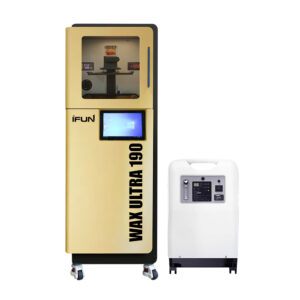In today’s fast-paced and highly personalized market, small jewelry studios are turning to a powerful tool to fuel their growth: 3D printed molds. With this innovative approach to jewelry production, even the smallest teams can create intricate, custom pieces faster and more affordably than ever before.
Let’s explore how 3D printing mold technology is reshaping the jewelry industry—from design freedom to cost-effective workflows—and how it helps small studios scale like never before.
Why 3D Printed Molds Are a Game-Changer for Small Jewelry Studios
Unlimited Design Possibilities with Digital Mold Making
Traditionally, crafting detailed molds required time-consuming manual work and highly skilled artisans. But with 3D printed resin molds, complex geometries like micro pavé settings, lattice filigree, and organic shapes can now be achieved effortlessly.
With accessible CAD tools, small teams can create, modify, and print mold designs quickly—no need to rely on external specialists. Whether you’re creating a 3D print wax mold for lost-wax casting or a direct 3D printed resin mold, the design flexibility is unparalleled.
Speed and Savings at Every Stage
3D printing streamlines the entire mold-making process:
- Faster prototyping: Print and test designs in hours, not weeks.
- Lower material costs: Less waste compared to traditional mold fabrication.
- Reduced labor: Simplified workflows mean fewer hands involved.
One jewelry brand in India, Melorra, reduced product launch timelines by 60% using 3D printed casting molds.
Small studios often find that a 3D printer for mold making can cut traditional costs by up to 50%, making high-quality production more accessible than ever.
On-Demand Production for Agile Businesses
Forget the need for high-volume inventory. With 3D printing jewelry molds, studios can produce designs on demand. This supports personalized orders, rapid revisions, and lean manufacturing.
On-demand printing also reduces the risks of overproduction and unsold stock, keeping your operations flexible and cost-effective.
Material Versatility for Every Project
Different applications call for different materials. 3D printing gives small studios access to options that suit their specific needs:
- Castable resins: Great for high-resolution jewelry and lost-wax casting workflows.
- 3D printed sand molds: Useful in large-scale or mixed-media applications.
- Direct metal printing: Allows for elite custom pieces in silver, gold, or platinum.
- Hybrid mold workflows: Combine 3D printed wax molds with traditional techniques for authentic results with modern efficiency.
Whether you’re working with 3D printing mold made for resin, wax, or metal, the material adaptability offers unmatched control.
Small Studios, Big Trends: Why Now Is the Time
Personalization Drives Demand
The global custom jewelry market is booming, especially among younger buyers who prioritize uniqueness. In China, over 61% of consumers prefer personalized designs.
3D printed molds make this easy:
- Quickly customize text, dates, or engravings
- Offer AR/VR previews with digital models
- Simplify client feedback loops before final casting
U.S. brand Mejuri leveraged this model to scale 40% year-over-year by offering personalized luxury.
Smarter, Lightweight Jewelry Design
With rising metal costs, customers are looking for lighter yet stylish pieces. 3D printing supports this through topology optimization, helping reduce material usage while maintaining structural integrity.
The result? Striking designs like Cartier’s Juste un Clou nail series that are minimalist, fashionable, and cost-efficient—often crafted with the help of 3D printed mold making technology.
Sustainable, Digital-First Workflows
Today’s consumers value sustainability. With 3D printing casting molds, your studio can:
- Operate with zero inventory by printing to order
- Minimize waste with precise material use
- Offer digital previews and online ordering to cut transportation costs
Combining 3D printing sand casting molds or resin molds with online storefronts allows for efficient production and local fulfillment.
Case Studies: Real Success Stories from Jewelry Makers
Shanghai: Fast Prototyping = Fast Sales
One Shanghai-based studio shrank its design validation process from 2 weeks to 2 days using SLA 3D printing. Their “cracked glass” mold series—impossible to make by hand—became a viral best-seller and boosted sales by 30%.
Shijiazhuang: Customized Pearl Sets
A pearl-focused studio let customers choose size, setting, and spacing using online tools. By combining 3D print mold making and CNC, they reduced delivery from 4 weeks to just 7 days.
Zibo: Cultural Meets Tech
This glass jewelry brand partnered with anime IPs and used 3D printed sand molds for their “Guochao” national trend line. The fusion of nostalgia and innovation doubled their revenue in 2025.
Getting Started with 3D Printing for Jewelry Molds
You don’t need a big team or large capital to begin. Here’s what you need to get started:
- Entry-level SLA or LCD 3D printer
- High-resolution castable resinor wax-compatible material
- CAD softwarelike Rhino, MatrixGold, or Blender
- A casting partner(if you’re not casting in-house)
With minimal setup, you can start 3D printing mold designs that turn into stunning finished jewelry.
Final Thoughts: Agility Is the New Scale
3D printed molds are not just a trend—they’re a smart, scalable way for small jewelry makers to stay competitive. From design flexibility and lower costs to faster production and sustainable workflows, this technology empowers you to do more with less.
The future of jewelry is digital, customizable, and on-demand. And it starts with the mold.
Ready to Explore 3D Printed Mold Making?
Whether you’re just getting started or looking to upgrade your process, we’re here to help. Contact us for sample prints, resin recommendations, or workflow advice. Let’s build your jewelry business, one 3D printed mold at a time.

